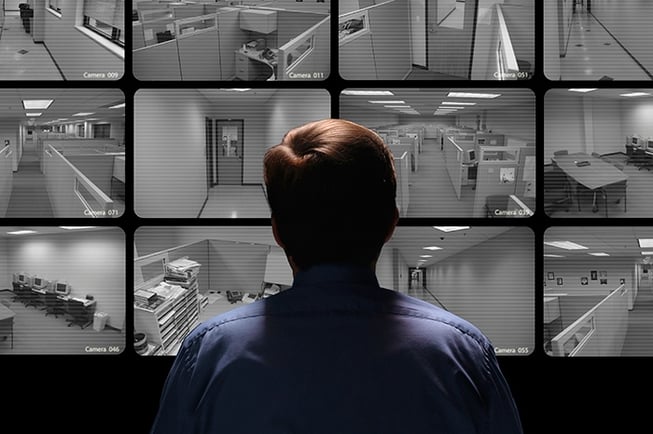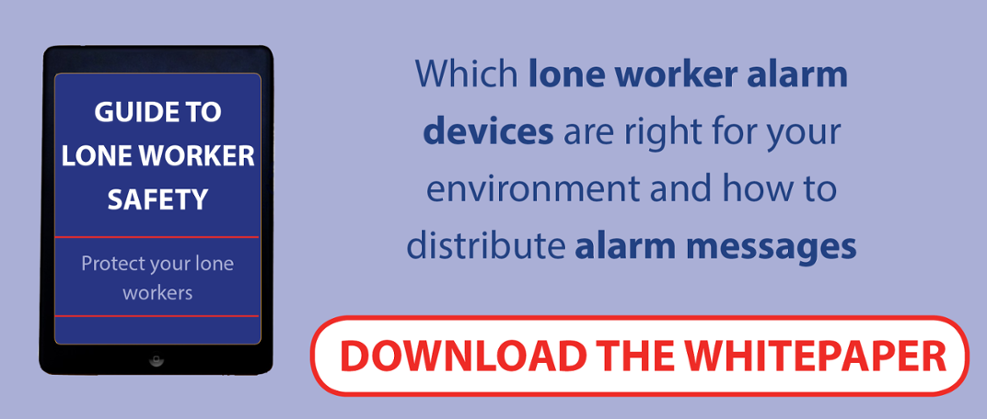
Lone worker safety is something that all employers should take seriously. Data from the TUC (in their 2009 study entitled 'Lone Working' reveals that 37% of safety representatives in the telecommunications industry state that lone working is a 'major hazard'. This report from the TUC also clearly demonstrates that lone working can expose employees to greater, and more varied, dangers than they experience when working with a team. Thus, it is crucial for all businesses to create effective safety solutions for lone workers. Below, you will find an overview of different systems for safeguarding lone workers.
Why is it important to safeguard lone workers?
Lone workers need specialised safeguards that are optimised to reflect their status as lone workers. When a lone worker experiences an emergency (whether that is a sudden bout of illness or a fall from an item of equipment), the situation can be exacerbated by their isolation. Without colleagues immediately on hand to help, a fall or a sudden sickness can turn from something relatively minor into a major incident. In addition, the very fact of working alone can, unfortunately, make employees more vulnerable to verbal or even physical attacks. This is particularly the case in the retail sector, with the TUC finding that thousands of shop workers fall victim to harassment or abuse each year. However, sadly this happens in all major sectors of the economy. For these reasons, it is crucial to prioritise lone worker safety.
The legal side of things
Employers are legally bound to safeguard the safety of their employees whilst they are working. Relevant pieces of legislation in this regard include the Health and Safety at Work Act (1974), the 1992 Workplace (Health, Safety and Welfare) Regulations and the Management of Health and Safety at Work Regulations 1999. Employers who do not take due care to ensure that precautions are taken to ensure employees can work safely at all times may find themselves liable to pay compensation for any injuries that are caused to employees as a result of accidents or other incidents at work. Looking after the safety of lone workers is thus also a highly pragmatic and legally requisite thing to do.
The best ways to promote lone worker safety: an overview of different systems
Any scheme to keep lone workers safe will begin with a thorough risk assessment. In almost all cases, these assessments will highlight the need for some kind of communication system to enable lone workers to alert other employees of any accidents or other incidents that have befallen them. There are various systems that can be put in place to monitor workers, and these are outlined below along with their pros and cons.
1. The phonecall system
Under this system, lone workers are called at regular, appropriate intervals (for example, every hour) in order to check that they are safe. This has the advantage of keeping lone workers in touch with their colleagues, which can alleviate the stress of working alone. However, in terms of disadvantages, it requires extra effort on the part of other employees and it also means that if an accident takes place directly after a phonecall, the worker will have to wait until the next call in order for aid to arrive.
2. The buddy system
Under this system, lone workers are paired up with another worker. This makes working safer and more companionable, however if the job does not really require two people the 'buddy' will be somewhat superfluous. In smaller companies, buddies could be working more profitably on other tasks rather than simply shadowing lone workers.
3. Automated systems
Automated systems are the best option as they monitor workers in real time and alert colleagues to any incidents straight away. Alarms and lone worker protection apps are key examples of this and the former are explained below.
4. Lone worker alarms
Lone worker alarms can form an integral part of any safety plan for lone workers. These alarms enable lone workers to register accidents as soon as they happen and thus access help as soon as possible. Though they may seem like small and simple devices, they can quite literally save lives. Of course, lone worker alarms should be used as part of a holistic system to ensure that lone workers are safe throughout the entirety of their time working with you. This system might include regular safety checks, frequent worker training and the identification of potential hazards with clear signage.
Click here to read more about lone workers
The advantages of lone worker alarm systems over other monitoring systems
Increasingly sophisticated, lone worker alarm devices can be equipped with GPS to enable lone workers to be located with total accuracy. They can also incorporate some element of voice technology to enable the worker to describe their situation and stay in touch with those who are helping them to surmount it. These alarms can also feature a pre-alarm which sounds before the main alarm is triggered in order to prevent any false alarms. As they provide updates in real time and integrate monitoring and communication, they avoid the time delays associated with manual monitoring systems such as phone calls. Even if the lone workers' alarms are never used, the peace of mind that they bring can significantly alleviate the psychological impact of working alone - something that the TUC's 2009 study identified as being one of the hazards associated with lone working.
Act now to ensure the safety of lone workers!
Identify who the lone workers are in your business and take measures now to ensure that they are protected at all times by purchasing a lone worker alarm devices. Not only is this part of your legal duty as an employer, it is also a practical and caring thing to do for employees. Lone workers need special kinds of safety precautions, and (as the above discussion shows), it is vitally important to reflect this in risk assessments and plans for emergencies.





